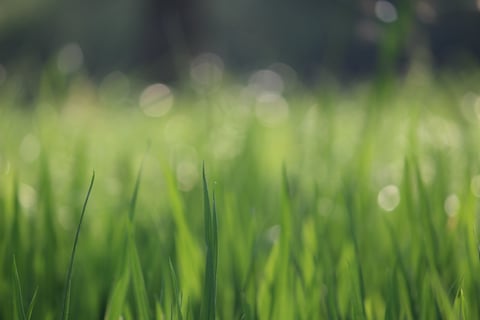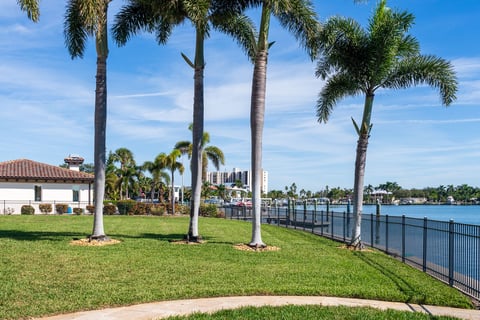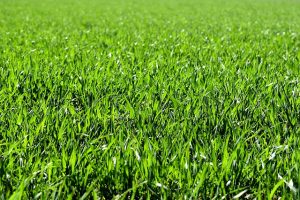


 Michael Tomaino
Michael Tomaino
It’s no secret that everyone loves a healthy, good-lookin’ lawn—and no, we’re not just talking about your jealous neighbors. Unfortunately, for as much work as you put into making your lawn look fantastic and thrive, there are lawn-lovers out there who are just dying to get their hands (or antennae or feelers) on your lovely-little-lawn.
That’s right, people, we’re talkin’ about pests, and unfortunately, they exist in and on any and every lawn. Even yours.
Lawn pests can be real, well, pests—they’re named that for a reason—and can cause extensive damage to your yard that’s not only unsightly but also quite costly to repair. And while you might be thinking that pest problems are easy to deal with, we’ve got even more bad news for you, they’re not. Unless you know exactly what type of pest problem you’ve got on your hands, it’s possible that the way you handle it could only make the problem worse.
What a whirlwind, right? We weren’t kidding when we said bugs and pests can seriously complicate things.
Luckily, there are a few ways you can tell the difference between the common pests that give our lawns issues (and us headaches). Just by understanding the different pests and bugs that could be attacking your luscious lawn, you’re putting yourself two steps ahead of the problem. Why? Because you can’t tackle the specific issue if you don’t know what’s causing it.
So, if you’re ready to learn about the creepy and crawly pests that could be the problem for your lawn, keep reading!
You might know these pesky little guys by their proper name—Black Beetles (also known as Weevils). Typically, Billbugs affect Zoysiagrass and Bermudagrass, but they’re not always exceptionally picky. If you find that your grass is wilting in an area where it’s getting plenty of water, then you’re probably dealing with an infestation of Billbugs eating the roots of your grass.
Also known as Scarab Beetle larvae, these little troublesome grubs feed hungrily on the roots of all types of turfgrass species. Living just below the soil, they hatch and rest while munching on your lawn, growing anywhere from ½ inch to 2 inches long. But don’t let these tiny fellas fool you, these little guys are credited with being the most common in Florida lawns. In other words, if you’ve got a Florida landscape, you’ll definitely be dealing with these buggers at some point. Common signs of White Grubs include major damage in large areas of dead turf and yellow-ish coloring.
If you have St. Augustine Grass in Florida, then you undoubtedly will deal with southern chinch bugs. These tiny little bugs are typically reddish-orange when they’re small, but turn all-black as they grow. While they only grow to be about 3/16 of an inch, they’re actually quite troublesome. You can often tell you have a cinch bug problem when your grass follows a sequence of turning yellow, then a burnt-reddish color, then dies off in large patches. You’ll likely deal with cinch bugs during spring through fall (typically beginning in April and continuing through October).
Sometimes called armyworms or grass loopers, cutworms are a nasty pest that you certainly won’t want to leave unattended on your lawn. Unfortunately, there’s no real off-season for these little buggers as they’re present in the spring, summer, and fall months (if you’re lucky, you’ll get a break during Florida’s mild winter). Typically, these pests will dig and burrow in the ground during the day, emerging at night to chew off grass shoots and munch on blades. The best way to tell if you’re dealing with cutworms is to check for circulars spots of dead or depressed grass—almost like a golf-ball mark on a golf green.
These turfgrass-loving pests will attack almost any kind of lawn, but they’re especially fond of centipede grass (the most susceptible type). Unfortunately, these pests don’t stop there—they also love ornament plants and are known for chewing up hollies. These bugs are active during the morning or evening hours (they’ll hide right under the soil during the hottest parts of the day) and will generally prefer the shadier areas of your lawn or landscape. If you notice grass wilting, the tips turning yellow and then brown, and curling blades, you’re more than likely dealing with a spittlebug problem.
These pesky bugs do a lot more than just hurt when they bite our ankles—they also can really screw up our lawns and landscapes. Fire ants will nest anywhere they can find shade, like in your lawn, under the sidewalk, beneath patios, and in the wedges of concrete. Fire ants are pretty easy to spot and the way they damage your lawn is pretty obvious—creating large colonies that destroy the roots of your grassDon’t get us wrong, we really hate that we have to break it to you that there are innumerable pests out there just waiting to destroy that beautiful lawn you’ve worked so hard for. But, we are glad that we can offer you the help you need to tackle those pesky pest issues one by one. If you’re looking to nip your lawn’s pest problem in the bud, then you’re in the right place. Reach out to the experts at Landcrafters for insight on how to tackle your pest problems, advice on what you can do to prevent pests, and even to receive quotes for your particular pest problem. No matter how you want to contact us (via our direct contact page on our website or by calling us at (727)-201-3947), we’re happy to provide you with over 20 years of landscaping experience to help your lawn and landscape pull through any pest problems.







Head Gardener for Landcrafters, Inc. Michael Tomaino, a cornerstone of Landcrafters since its inception, oversees all aspects of business operations with a wealth of experience. With years of adept team management and leadership under his belt, coupled with a robust educational background, both within and beyond the industry, Michael is dedicated to steering Landcrafters towards becoming the foremost landscape management provider in the Tampa Bay Area.